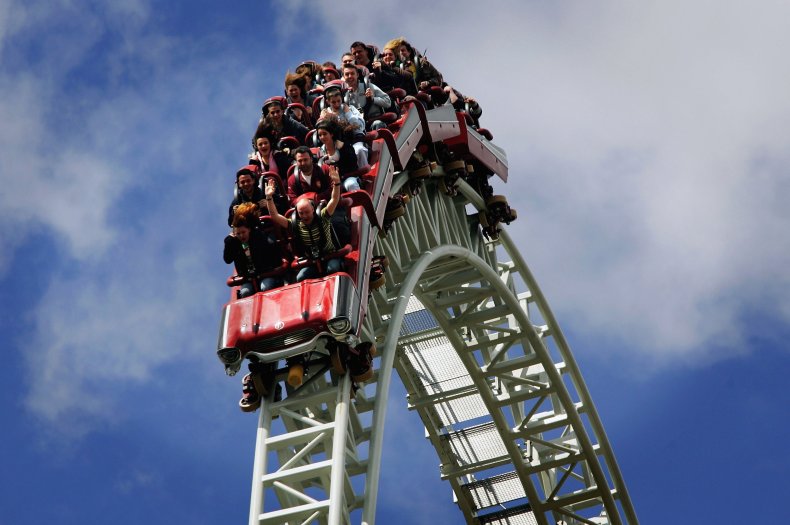Can You Ride a Roller Coaster With a Broken Bone
Known as one of the world's most terrifying amusement park rides, the Do-Dodonpa roller coaster in Japan's Fuji-Q Highland, located near the base of Mount Fuji, has been shut down by the region's prefectural government. The closure comes after several passengers sustained fractured bones while on the ride—though the exact cause of the injuries has officials stumped.
The coaster, known for its "super death" speeds, is the fastest-accelerating roller coaster in the world, going from zero to 112 miles per hour in 1.56 seconds. The "air-launched" ride also features the globe's largest loop, reports Fuji-Q's website.
The injuries that prompted the ride's suspension occurred between December 2020 and August 2021, though the precise number of injured passengers varies across news outlets: the Mainichi Shimbun reported that "four people have broken bones" on Do-Dodonpa, whereas Vice wrote the victims numbered "at least six."
Of the six, "four of them said they broke their neck or back," said a Fuji-Q spokesperson, according to Vice.
The Mainichi Shimbun explained that those injured were "in their 30s to 50s." On the ride, they "broke bones including in their neck and back, with full recovery requiring between one and three months."
Sustaining an injury on a roller coaster or other amusement park attraction is incredibly rare. According to Safety Science in 2019, the International Association of Amusement Parks and Attractions (IAAPA) reported that there is a one in 17 million chance of being seriously injured on a fixed-site ride in the United States. The report added that "rider behavior" and misconduct are often blamed for injuries on attractions.

Do-Dodonpa will reportedly be closed until the cause of the injuries is determined—an endeavor that is, so far, proving to be a challenge. Several inspections of the ride's machinery, including a check with manufacturers, concluded that the coaster showed no signs of abnormality and is running as it should.
Moreover, Do-Dodonpa first opened in 2001 and successfully ran for decades without any reports of broken bones. According to Vice, the injuries spanning December 2020 to August 2021, are the only times passengers have broken bones on the ride. Even after the ride was renovated in 2017, to increase its speed, there were no reports of any major injuries.
That being said, Nihon University architecture professor Naoya Miyasato told Vice that he suspects the issue stems from the coaster's intense acceleration, which, at three times the force of gravity, is similar to what astronauts might feel during a launch.
"If a rider can't withstand the acceleration, then they sustain injury, which could be what's happening here," said Miyasato.
Another issue might be the way passengers are sitting. "If they detected no serious concerns with the actual ride, then it could be the way people were sitting," he explained to Vice. "But if a person was sitting incorrectly, say with space between their backs and their seat, it's the responsibility of the park employees to check their seating position."
One of the injured riders told the Mainichi Shimbun that she "might have been leaning forward during the ride."
It remains unclear if and when Do-Dodonpa will reopen to the public.
Can You Ride a Roller Coaster With a Broken Bone
Source: https://www.newsweek.com/worlds-fastest-accelerating-roller-coaster-closes-after-breaking-riders-bones-1622266
Belum ada Komentar untuk "Can You Ride a Roller Coaster With a Broken Bone"
Posting Komentar